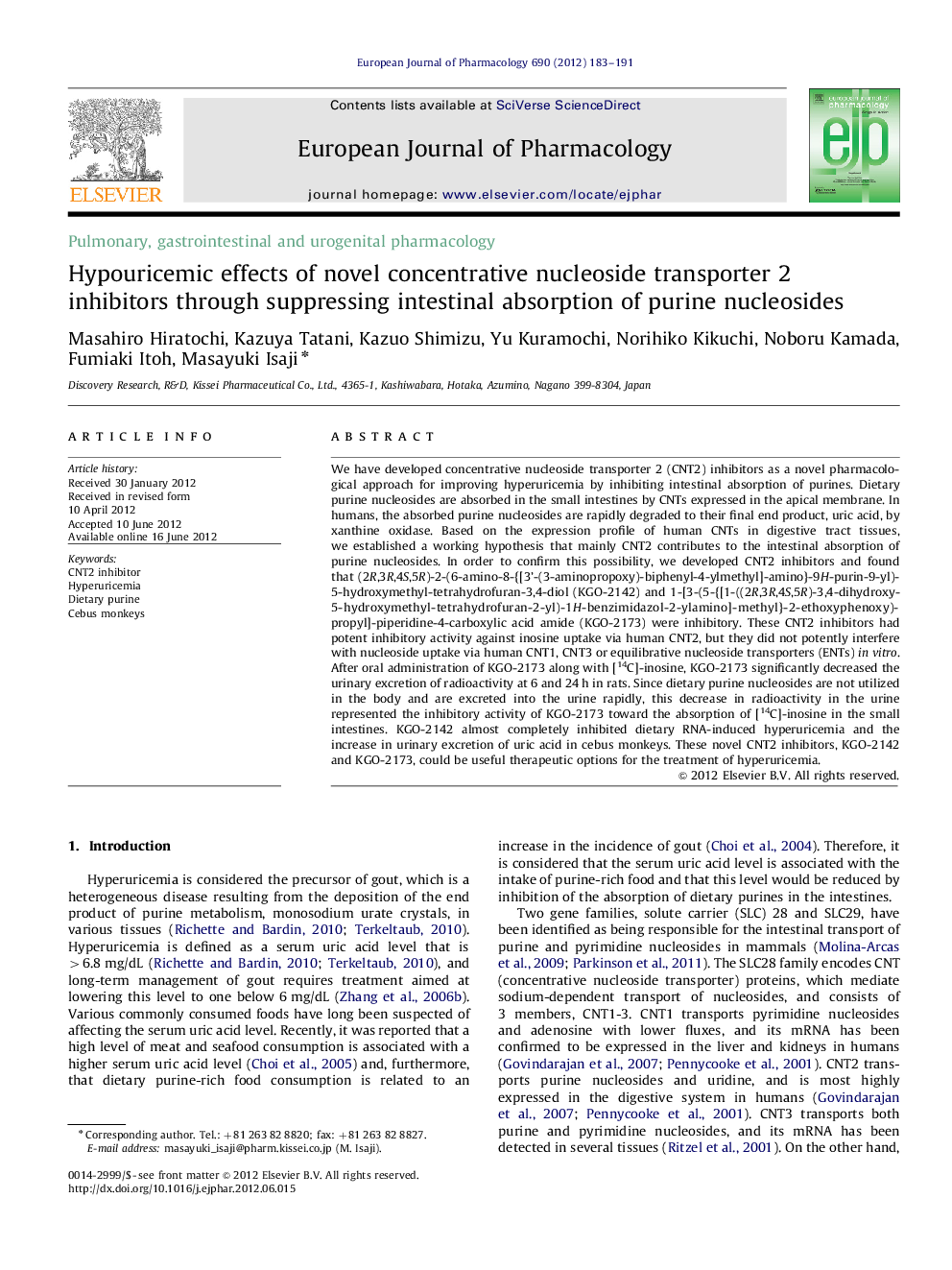| Article ID | Journal | Published Year | Pages | File Type |
|---|---|---|---|---|
| 5829191 | European Journal of Pharmacology | 2012 | 9 Pages |
Abstract
We have developed concentrative nucleoside transporter 2 (CNT2) inhibitors as a novel pharmacological approach for improving hyperuricemia by inhibiting intestinal absorption of purines. Dietary purine nucleosides are absorbed in the small intestines by CNTs expressed in the apical membrane. In humans, the absorbed purine nucleosides are rapidly degraded to their final end product, uric acid, by xanthine oxidase. Based on the expression profile of human CNTs in digestive tract tissues, we established a working hypothesis that mainly CNT2 contributes to the intestinal absorption of purine nucleosides. In order to confirm this possibility, we developed CNT2 inhibitors and found that (2R,3R,4S,5R)-2-(6-amino-8-{[3'-(3-aminopropoxy)-biphenyl-4-ylmethyl]-amino}-9H-purin-9-yl)-5-hydroxymethyl-tetrahydrofuran-3,4-diol (KGO-2142) and 1-[3-(5-{[1-((2R,3R,4S,5R)-3,4-dihydroxy-5-hydroxymethyl-tetrahydrofuran-2-yl)-1H-benzimidazol-2-ylamino]-methyl}-2-ethoxyphenoxy)-propyl]-piperidine-4-carboxylic acid amide (KGO-2173) were inhibitory. These CNT2 inhibitors had potent inhibitory activity against inosine uptake via human CNT2, but they did not potently interfere with nucleoside uptake via human CNT1, CNT3 or equilibrative nucleoside transporters (ENTs) in vitro. After oral administration of KGO-2173 along with [14C]-inosine, KGO-2173 significantly decreased the urinary excretion of radioactivity at 6 and 24Â h in rats. Since dietary purine nucleosides are not utilized in the body and are excreted into the urine rapidly, this decrease in radioactivity in the urine represented the inhibitory activity of KGO-2173 toward the absorption of [14C]-inosine in the small intestines. KGO-2142 almost completely inhibited dietary RNA-induced hyperuricemia and the increase in urinary excretion of uric acid in cebus monkeys. These novel CNT2 inhibitors, KGO-2142 and KGO-2173, could be useful therapeutic options for the treatment of hyperuricemia.
Keywords
Related Topics
Life Sciences
Neuroscience
Cellular and Molecular Neuroscience
Authors
Masahiro Hiratochi, Kazuya Tatani, Kazuo Shimizu, Yu Kuramochi, Norihiko Kikuchi, Noboru Kamada, Fumiaki Itoh, Masayuki Isaji,
